Explore Zuunmod - Mongolia Travel, Asia
Zuunmod is a little hamlet that provides a singular fusion of natural beauty and historical depth, nestled in the middle of Mongolia. As the capital of Tuv Province, Zuunmod is an emerging destination for travelers seeking an authentic Mongolian experience away from the bustling capital of Ulaanbaatar. Its strategic location, surrounded by stunning landscapes, makes it a gateway to exploring Mongolia’s diverse terrain and cultural heritage.
Population: Approximately 20,000 in 2017.
Economy: Zuunmod's economy thrives on agriculture, local crafts, and tourism. The town supports traditional industries, contributing to a growing economy with increasing visitor interest.
Landmarks: Famous for the Zuunmod Palace, Zuunmod Central Square, and Sukhbaatar Park.
Mongolia
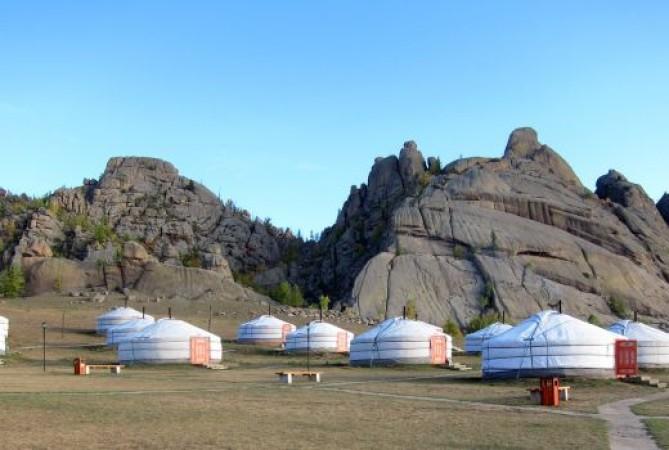
Overview of Zuunmod
History & Cultural Influence
Zuunmod's history is deeply intertwined with Mongolia’s rich cultural tapestry. Founded in the early 20th century, this town has evolved from a modest settlement into a significant cultural hub. Its historical significance is marked by its role in Mongolia’s political and social developments, particularly during the 20th century. Traditional Mongolian customs and practices are preserved here, providing a glimpse into the country’s ancient heritage. Traditional Mongolian music, dancing, and artwork are celebrated during cultural events conducted all year round. These events are a testament to Zuunmod’s dedication to preserving its cultural legacy while embracing contemporary influences.
Interaction with The Locals
Zuunmod is home to about 20,000 people, and the population is continuously expanding. The town’s citizens are known for their warm hospitality and strong connection to Mongolian traditions. As a relatively small urban center, Zuunmod fosters a close-knit community where local customs and cultural practices are deeply cherished. The population predominantly consists of ethnic Mongols, with many engaged in agriculture, local crafts, and small businesses, contributing to the town’s unique charm and vibrant cultural life.
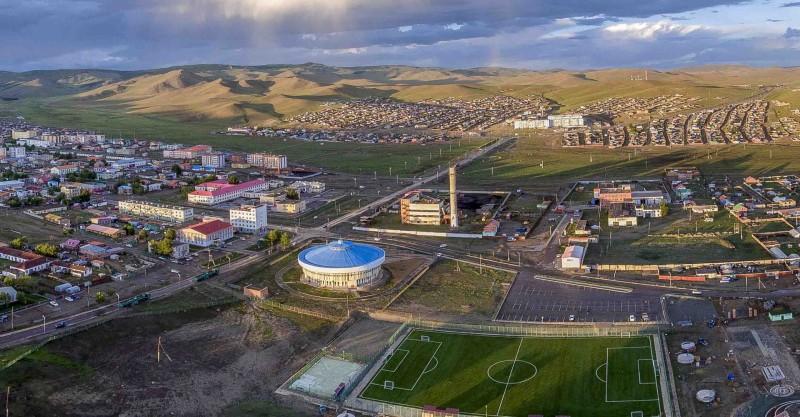
Zuunmod Central Square - © Mongolia Tourism
Top Attractions in Zuunmod
Zuunmod offers a diverse array of attractions that showcase its rich history, cultural heritage, and natural beauty. Whether you’re interested in exploring local history, enjoying natural hot springs, or engaging with traditional arts, Zuunmod has something for every traveler.
- Zuunmod Central Square: This bustling area is the heart of the town, featuring a vibrant mix of local shops, cafes, and public spaces. It’s an excellent place to experience the everyday life of Zuunmod’s residents and enjoy local food and crafts.
- Zuunmod Palace: A historical building that serves as a cultural center and venue for various events and exhibitions. The palace offers a glimpse into the architectural style and historical significance of the area.
- Gachuurt Hot Springs: A natural hot spring located a short drive from Zuunmod. It’s an ideal spot for relaxation and rejuvenation, offering therapeutic benefits in a picturesque setting surrounded by nature.
- Mongolian Horse Museum: This unique museum highlights the important role horses play in Mongolian culture and history. It features exhibits on traditional horse gear, famous horse breeds, and historical accounts of Mongolia’s equestrian traditions.
- Nomadic Cultural Village: Experience traditional Mongolian nomadic life firsthand in this cultural village located near Zuunmod. Visitors can participate in traditional activities such as archery, horseback riding, and cooking, and stay in authentic yurts.
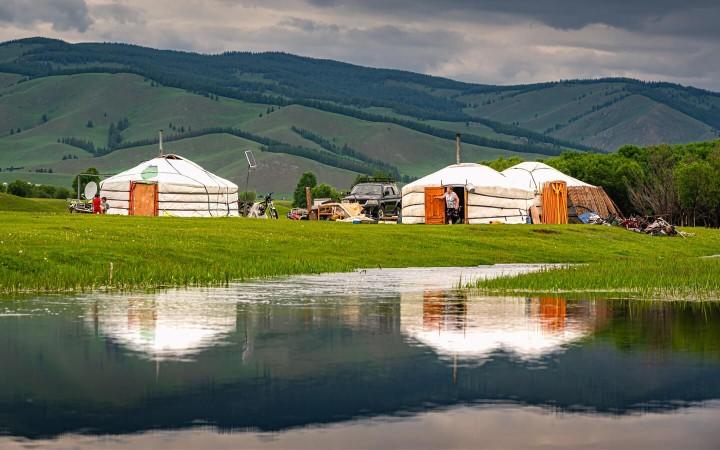
Nomadic Cultural Village - © Mongolia Tourism
Must-Try Dishes in Zuunmod
Exploring Zuunmod is a culinary adventure, offering a variety of traditional Mongolian dishes that reflect the region’s rich heritage. These additional dishes highlight the variety and richness of Mongolian cuisine, making your visit to Zuunmod a flavorful and memorable experience.
- Khuushuur: This traditional Mongolian fried pastry is filled with minced meat, typically beef or mutton, and seasoned with onions and spices. Crispy on the outside and savory on the inside, khuushuur is a popular snack enjoyed by locals and visitors alike.
- Boodog: A unique dish made by cooking whole goats or sheep stuffed with hot stones. The meat is slow-cooked in its own juices, resulting in tender, flavorful meat. It’s a specialty often served at festivals and large gatherings.
- Tsuih: A traditional Mongolian stew made with meat, vegetables, and sometimes noodles. It’s a comforting and filling dish, perfect for warming up after a day of exploring.
- Airag: This fermented mare’s milk is a traditional Mongolian beverage with a slightly tangy flavor. It’s often enjoyed during festivals and social gatherings and is a staple in Mongolian culture.
- Buuz: These steamed dumplings are similar to khuushuur but are cooked by steaming rather than frying. Buuz are filled with minced meat and are often served during special occasions and family gatherings.
- Tsuivan: A savory noodle dish stir-fried with meat, vegetables, and spices. Tsuivan is a beloved Mongolian comfort food, offering a satisfying and flavorful meal.
- Suutei Tsai: A traditional beverage made with black tea, milk, and salt. Suutei Tsai is commonly enjoyed with meals and offers a distinctive taste that complements Mongolian cuisine.
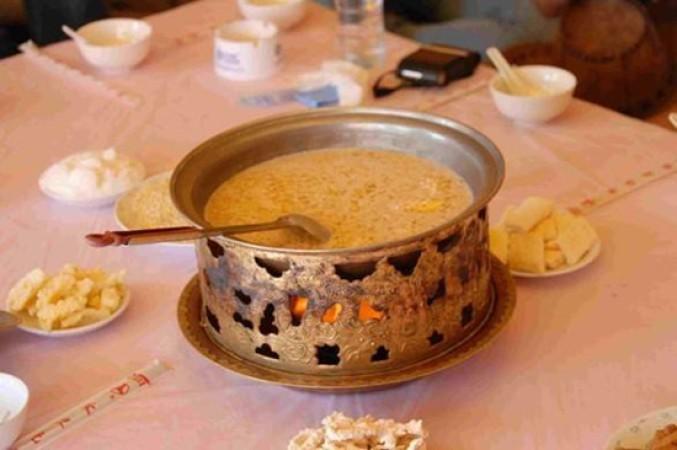
Suutei Tsai - © China Daily
Festivals & Local Celebrations
Zuunmod is a vibrant town where traditional Mongolian festivals and local celebrations play a central role in the community. These festivals and celebrations are integral to Zuunmod’s cultural fabric, offering a vibrant and immersive experience for visitors and providing insight into the town’s rich traditions and communal spirit.
Naadam Festival
Held every July, Naadam is one of Mongolia’s most significant celebrations. Mongolian tradition's "Three Manly Sports"—wrestling, horse racing, and archery—are demonstrated as the highlights of the festival. Zuunmod hosts its own Naadam events with local competitors, traditional music, and dance performances, creating a festive atmosphere that draws both locals and visitors.
Tsagaan Sar (White Moon Festival)
In February, Mongolians celebrate the Lunar New Year, known as Tsagaan Sar. It's a time for celebrating with family, eating, and paying respect to the past. The festival features traditional foods like buuz (steamed dumplings) and is marked by special rituals and ceremonies. Visitors can experience local customs, enjoy festive meals, and witness traditional Mongolian cultural practices.
Mongolian Independence Day
Celebrated on November 26, this day commemorates Mongolia's declaration of independence from China in 1911. In Zuunmod, the day is marked by patriotic events, parades, and cultural performances that highlight Mongolia’s history and national pride.
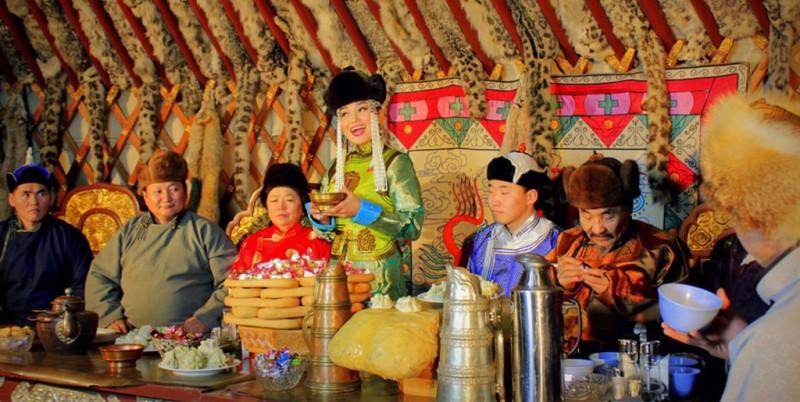
Tsagaan Sar - © Znews
What to Do in Zuunmod
Zuunmod offers a range of activities for travelers seeking adventure and cultural immersion. From outdoor excursions to cultural explorations, these activities provide a variety of experiences to suit a range of interests.
- Hiking and Trekking: Explore the scenic landscapes surrounding Zuunmod through hiking and trekking trails. Gorkhi-Terelj National Park, nearby, offers a variety of trails with stunning views of rock formations and lush valleys.
- Horseback Riding: Experience Mongolia’s equestrian culture by taking a horseback riding tour. This activity allows you to explore the countryside and enjoy the open landscapes just as Mongolian nomads have for centuries.
- Cultural Tours: Participate in guided tours that highlight Zuunmod’s historical sites, traditional crafts, and local customs. These excursions offer insightful perspectives into the town's rich cultural legacy.
- Photography Tours: Take photography trips to capture Zuunmod's natural beauty and cultural diversity. There are many opportunities to take beautiful pictures in the town thanks to its active marketplaces, classic buildings, and picturesque views.
Shopping in Zuunmod
Shopping in Zuunmod is a delightful experience, offering a range of options from traditional crafts to local goods. Shopping in Zuunmod provides a chance to bring home authentic souvenirs and support local artisans, making it a rewarding part of your visit.
- Local Markets: Explore Zuunmod’s bustling markets, where you can find fresh produce, local foods, and traditional Mongolian products. Markets are lively places to experience daily life and interact with local vendors.
- Traditional Crafts: Zuunmod is known for its traditional crafts, including intricate textiles, handcrafted jewelry, and Mongolian art. These items make unique souvenirs and gifts.
- Souvenir Shops: Visit local souvenir shops for items such as Mongolian-themed clothing, traditional artifacts, and handcrafted goods. These shops often feature a variety of products that reflect the region’s culture.
- Art Galleries: Local art galleries offer a chance to purchase contemporary Mongolian art and crafts. These galleries showcase works by local artists and provide an opportunity to support the creative community.
- Specialty Stores: Check out specialty stores for unique Mongolian products, such as traditional herbal remedies, local snacks, and handmade leather goods.
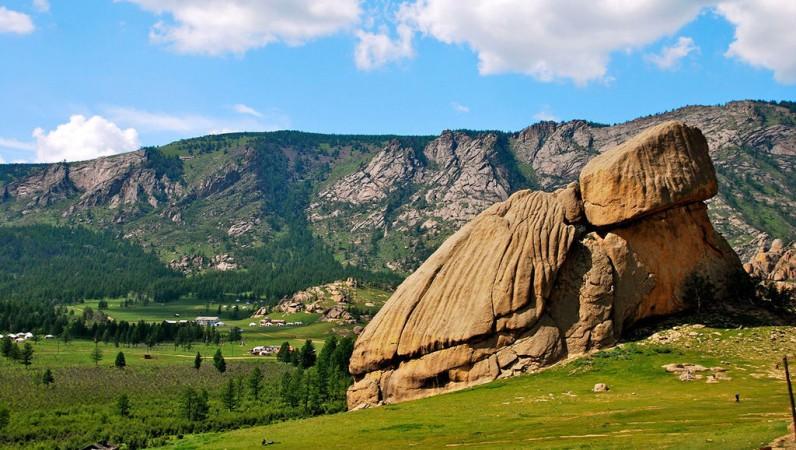
Explore the Gorkhi-Terelj National Park - © Mongolia Tourism
Weather in Zuunmod: Best Time to Visit
Spring in Zuunmod
Spring in Zuunmod brings a refreshing change as temperatures gradually warm up. Daytime temperatures range from 5°C to 15°C (41°F to 59°F), while nights can still be chilly. This is a great time for outdoor activities like hiking and exploring the countryside, as the landscape begins to bloom and the weather is generally pleasant. Spring also marks the start of the tourism season, with fewer crowds compared to the summer months.
Summer in Zuunmod
Summer is the peak tourist season in Zuunmod, with temperatures ranging from 20°C to 30°C (68°F to 86°F). The weather is warm and dry, making it ideal for outdoor adventures and cultural festivals. This is the best time to experience the Naadam Festival, which features traditional sports and celebrations. The clear skies and extended daylight hours offer perfect conditions for sightseeing, trekking, and enjoying local events.
Autumn in Zuunmod
Autumn brings cooler temperatures, ranging from 10°C to 20°C (50°F to 68°F), and the landscapes are adorned with vibrant fall colors. This season is perfect for those who enjoy crisp air and fewer tourists. It’s a great time to visit the local craft fair and experience the Harvest Festival. The weather is generally stable, but be prepared for sudden drops in temperature, especially towards the end of the season.
Winter in Zuunmod
Winter in Zuunmod is cold and snowy, with temperatures often dropping below -10°C (14°F). Daytime highs are around -5°C to 5°C (23°F to 41°F), while nights can be extremely frigid. Despite the cold, winter offers a unique charm, with opportunities for winter sports like skiing and snowboarding at nearby resorts. The serene winter landscape and fewer tourists provide a peaceful and picturesque setting.
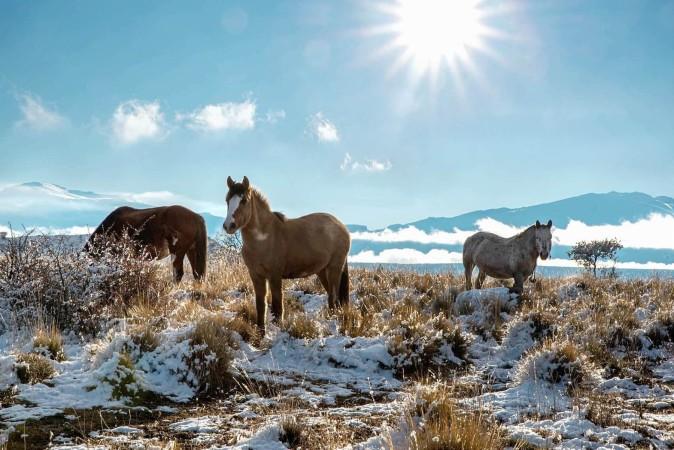
Scenery covered in snow during winter - © Mongolia Tourism
Essential Travel Information
Getting Around Zuunmod
Navigating Zuunmod and exploring its surroundings is convenient with various transportation options. These transportation options provide a range of choices to suit different preferences and ensure easy access to Zuunmod’s attractions and amenities.
- Public Buses: Zuunmod is served by a network of public buses that connect different parts of the town and nearby areas. Buses are a cost-effective way to travel locally and are often used by residents for daily commutes.
- Taxis: Taxis are readily available in Zuunmod and provide a convenient option for getting around the town and reaching nearby destinations. It's best to settle on a fare with the driver prior to embarking on your trip.
- Bicycles: Renting a bicycle is a great way to navigate Zuunmod’s streets and enjoy the local scenery. Bicycles are available for rent at various locations, including tourist centers and local shops.
- Walking: Zuunmod is a compact town, and many attractions are within walking distance. Exploring on foot allows you to fully appreciate the local atmosphere and discover hidden gems.
ATM & Banking Services
Managing finances in Zuunmod is easy with various banking services and ATM facilities available throughout the town. ATMs are conveniently located at major banks, shopping centers, and hotels, accepting international credit and debit cards for cash withdrawals in local currency (Tugrik). Banks in the area provide services such as currency exchange, account management, and financial advice. While credit and debit cards are generally accepted in hotels, restaurants, and bigger businesses, it's a good idea to carry extra cash for smaller purchases and rural locations.
Where to Stay in Zuunmod
Zuunmod offers a range of accommodation options to suit various preferences and budgets. These accommodation options cater to different needs and preferences, ensuring a comfortable and enjoyable stay in Zuunmod.
- Hotels: Zuunmod has several hotels that provide comfortable accommodations with modern amenities. Options range from mid-range to upscale hotels, offering services such as Wi-Fi, breakfast, and tour assistance.
- Guesthouses: For a more intimate experience, try staying in a local guesthouse. Guesthouses provide a pleasant setting and frequently feature traditional Mongolian hospitality. They are a good alternative for vacationers looking for a comfortable setting.
- Yurt Stays/Ger Camp: Experience traditional Mongolian living by staying in a yurt (ger). Some guesthouses and resorts offer yurt accommodations, providing a unique cultural experience complete with traditional furnishings and meals.
Articles for you

Explore Yala National Park - Sri Lanka Travel, Asia
Tucked away in Sri Lanka’s southeastern corner, Yala National Park is where wild nature meets deep tradition. Known worldwide for its leopard population, the park is also home to elephants, sloth bears, crocodiles, and hundreds of bird species. Beyond wildlife, Yala opens doors to a cultural landscape dotted with ancient temples, Buddhist ruins, and coastal villages. For travelers seeking more than just a safari, Yala offers a chance to explore eco-tourism, local communities, and sacred heritage sites.
Population: The Yala National Park area doesn’t have a human population.
Economy: The economy around Yala National Park thrives on a blend of eco-tourism, agriculture, and local services. Safari tours, eco-lodges, and cultural experiences drive steady income for nearby towns like Tissamaharama and Kataragama, supporting thousands of families.
Landmarks: Famous for Block I of Yala and wildlife encounters, including elephants, sloth bears, crocodiles, and exotic bird species.

Explore Galle - Sri Lanka Travel, Asia
Nestled on Sri Lanka’s southern coastline, Galle is a vibrant city where history meets the sea. Its cobbled streets, colonial architecture, and serene beaches make it a must-visit destination for travelers seeking a blend of culture, adventure, and relaxation. A UNESCO World Heritage site, Galle captivates visitors with its Dutch Fort, bustling markets, and friendly locals. Whether you’re exploring the ramparts at sunset or savoring fresh seafood by the shore, Galle promises an unforgettable journey into Sri Lanka’s heritage.
Population: Approximately 113,000 in 2023.
Economy: Galle’s economy thrives on tourism, trade, and fisheries. The city’s historic fort, colonial architecture, and coastal charm draw thousands of international visitors each year, making tourism its main economic driver. Fishing remains vital for local livelihoods, supplying fresh seafood across the region.
Landmarks: Famous for the Galle Fort, Dutch Reformed Church & Maritime Museum, and Unawatuna Beach.

Explore Bentota - Sri Lanka Travel, Asia
Nestled along Sri Lanka’s southwestern coast, Bentota is a tropical paradise that blends golden beaches, vibrant culture, and thrilling adventures. Famous for its calm waters, luxury resorts, and scenic river estuary, Bentota has become a top destination for travelers seeking both relaxation and authentic experiences. From serene beach walks at sunrise to adrenaline-pumping water sports, this coastal town offers a perfect balance of leisure and exploration. With its proximity to Colombo and Galle, Bentota is easy to reach, making it an ideal stop for both short escapes and extended holidays.
Population: Approximately 37,000 in 2023.
Economy: Bentota’s economy thrives mainly on tourism, which drives local businesses such as hotels, restaurants, and wellness retreats. The town also benefits from fishing, coconut cultivation, and handicrafts like wood carving and batik textiles. Many residents rely on the growing demand for water sports and Ayurvedic treatments, making tourism the backbone of both income and employment in the area.
Landmarks: Famous for Bentota Beach, Bentota River Safari, and Kande Vihara Temple.

Explore Mirissa - Sri Lanka Travel, Asia
Mirissa is a charming coastal town on Sri Lanka’s southern shoreline. Known for its golden beaches, turquoise waters, and vibrant marine life, it has become a must-visit stop for travelers exploring the island. Many come for whale watching, surfing, and sunset views at Coconut Tree Hill, but Mirissa offers much more than postcard beauty. The fishing boats you see anchored by the bay carry generations of stories. Local traditions, delicious cuisine, and a laid-back rhythm of life shape every visitor’s experience.
Population: Approximately 4,700 in 2023.
Economy: Mirissa’s economy is largely shaped by its coastal location. Fishing has long been the backbone of local livelihoods, with generations relying on the Indian Ocean for income. In recent decades, tourism has become the main driver of growth, thanks to whale watching, surfing, and beachside hospitality.
Landmarks: Famous for Mirissa Beach, Coconut Tree Hill, and Parrot Rock Bridge.

Explore Nuwara Eliya - Sri Lanka Travel, Asia
Tucked away in the Central Highlands of Sri Lanka, Nuwara Eliya is often called “Little England”. With its rolling tea plantations, cool misty mornings, and colonial charm, this mountain town feels like a step into another world. Travelers come here to breathe fresh air, walk through flower gardens, sip the finest Ceylon Tea, and enjoy a pace of life far from the island’s busy cities. Whether you’re drawn by scenic landscapes, heritage architecture, or the warmth of its people, Nuwara Eliya is a destination that blends nature, culture, and history in perfect harmony.
Population: Approximately 781,000 in 2023.
Economy: Nuwara Eliya’s economy thrives mainly on tea production, as it sits in the heart of Sri Lanka’s central highlands, famous worldwide for Ceylon Tea. The city also benefits from a growing tourism industry, attracting visitors with its colonial charm, cool climate, and scenic landscapes.
Landmarks: Famous for Gregory Lake, Hakgala Botanical Garden, and Victoria Park.

Explore Sukau - Malaysia Travel, Asia
Nestled on the banks of the Kinabatangan River in Sabah, Malaysian Borneo, Sukau is a destination where wildlife, culture, and conservation come together. Known as one of Asia’s top spots for river safaris and eco-tourism, this quiet village offers a front-row seat to encounters with Bornean orangutans, pygmy elephants, proboscis monkeys, and exotic birdlife.
Population: Approximately 1,400 in 2019.
Economy: Sukau’s economy is shaped by its riverine location and natural resources. Traditionally, the Orang Sungai community relied on fishing, small-scale farming, and forest gathering for their livelihood. Today, the village has shifted toward eco-tourism, with river cruises, jungle trekking, and homestays providing income.
Landmarks: Famous for the Kinabatangan River cruises, Gomantong Caves, and Ox-bow lakes and wetlands.
